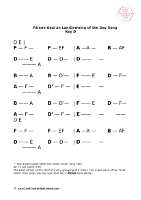Technique & Tips
Note: The Advanced course is split into 3 levels so that you can track your progress; Advanced 1, Advanced 2, Advanced 3. This Free Lesson is from Advanced 2.
As the course progresses, the lessons get more difficult. Listen to the audio track first. It’s always good to have the melody in your head before you start. Try to learn Irish traditional music by ear. Use the notation as a reference only. It might be more difficult at first, but it’s worth it in the long run.
This tune uses some of the less-used buttons on the concertina, mainly Bb and Bb’ and F♮ and F ♮’. It’s also a good tune for practicing using your third and fourth fingers on the right hand, using the high F ♮’ (3rd finger) and A’ (little finger) on the middle row. It’s a great tune for cuts, also. If you’re having any difficulty getting those high F ♮’ rolls with the third finger on the right hand side, try rolling it using the bellows instead of bringing in the second button (ie: bellows rolls).
This style of ornamenting can often sound nicer than bringing in extra notes to ornament. Once you get a hold of the right pulse in the bellows, you could be doing all your rolls this way. Check out the lesson on ‘Rolls’ to learn more about bellows rolls.
After you’ve taken the video lesson, play along with the audio track as many times as you can. Slow down to suit. Please don’t try to play faster than is comfortable for you. Make use of the features on the video. The Loop feature enables you to practice one section of the video over and over again. You can slow down or speed up the lesson too. Symbols for ornamentation in the ABC and staff notation:

Story Behind the Tune
James ‘Lad’ O’Beirne (1911-1980) was a renowned Sligo fiddle-player who lived in the Bronx, New York and who in turn was a contemporary of the fellow county fiddle-player Michael Coleman. There are a number of tunes with the Lad O’Beirne name, but I’m unsure if he composed this tune or if it was named after him. It is unusual in the way it flows into and out of minor key in the first part, which gives it an attractive sound. I first heard it on a recording by Sharon Shannon (‘Each Little Thing’, 1997).
Feedback
Please Leave a comment
We aim to provide an excellent learning experience to all our students and any feedback is appreciated.


